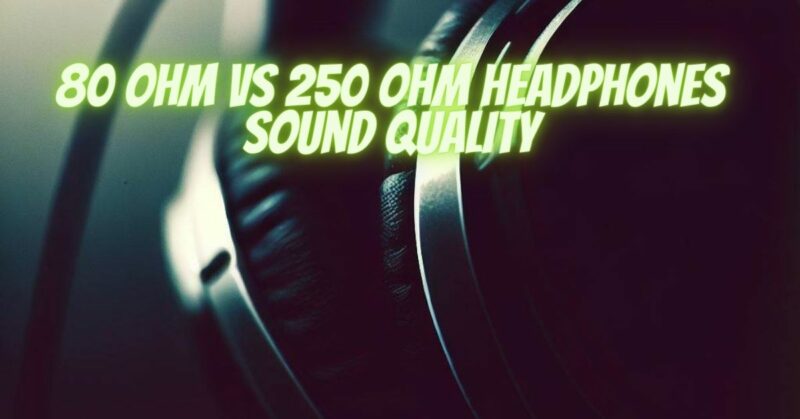When delving into the realm of high-quality audio, the choice of headphones can significantly impact your listening experience. A common comparison that surfaces is between 80-ohm and 250-ohm headphones. This article aims to elucidate the differences in sound quality between these two impedance options, offering insights into how they affect audio reproduction and your overall auditory journey.
Understanding Headphone Impedance
Headphone impedance, measured in ohms (Ω), reflects the electrical resistance that headphones present to the audio source. While impedance is not the sole determinant of sound quality, it does influence how headphones interact with amplifiers and how they reproduce audio frequencies.
Comparing 80-Ohm and 250-Ohm Headphones
When considering the sound quality differences between 80-ohm and 250-ohm headphones, it’s important to take various factors into account:
- Amplification Requirements:
- 80-Ohm Headphones: 80-ohm headphones are generally more efficient in converting electrical signals into sound, requiring less power to achieve comfortable listening volumes. They can be driven effectively by a wider range of devices, including smartphones and laptops, without necessarily requiring a dedicated amplifier.
- 250-Ohm Headphones: 250-ohm headphones have higher impedance and are less sensitive to power variations. They require more power to produce the same volume levels as 80-ohm headphones. To fully unlock their potential and achieve optimal sound quality, dedicated headphone amplification is often recommended.
- Sound Quality:
- 80-Ohm Headphones: With their lower impedance, 80-ohm headphones can offer a more direct and immediate sound experience. They might emphasize dynamic range and punchy bass, making them well-suited for genres like pop, rock, and electronic music.
- 250-Ohm Headphones: 250-ohm headphones might offer more refined sound quality, especially in terms of detail and accuracy. Their higher impedance can lead to better control over driver movement, resulting in improved clarity and a more nuanced audio profile. They could be preferred for genres like classical, jazz, and acoustic music.
- Listening Environment:
- 80-Ohm Headphones: Due to their lower impedance and sensitivity, 80-ohm headphones might be suitable for use in noisy environments where you need to achieve higher volumes to drown out external noise.
- 250-Ohm Headphones: With their potential for enhanced detail and accuracy, 250-ohm headphones can shine in quiet listening environments, allowing you to appreciate subtle nuances and intricacies in your music.
Choosing Based on Preference
- Musical Taste: Consider the genres of music you enjoy. If you primarily listen to bass-heavy or contemporary genres, 80-ohm headphones might be more appealing. If you appreciate intricate instrumentals and vocals, 250-ohm headphones could be the better choice.
- Amplification: If you’re willing to invest in dedicated amplification and prioritize nuanced audio quality, 250-ohm headphones can provide an immersive and detailed listening experience.
- Portability: If you value portability and plan to use your headphones with a variety of devices, 80-ohm headphones might be more convenient due to their compatibility with a wider range of sources.
Choosing between 80-ohm and 250-ohm headphones ultimately boils down to your individual preferences and priorities. 80-ohm headphones offer immediacy and versatility, while 250-ohm headphones provide potential for enhanced detail and clarity. Consider your musical tastes, listening environment, and willingness to invest in amplification to make an informed decision that aligns with your quest for superior sound quality and an exceptional auditory experience.


